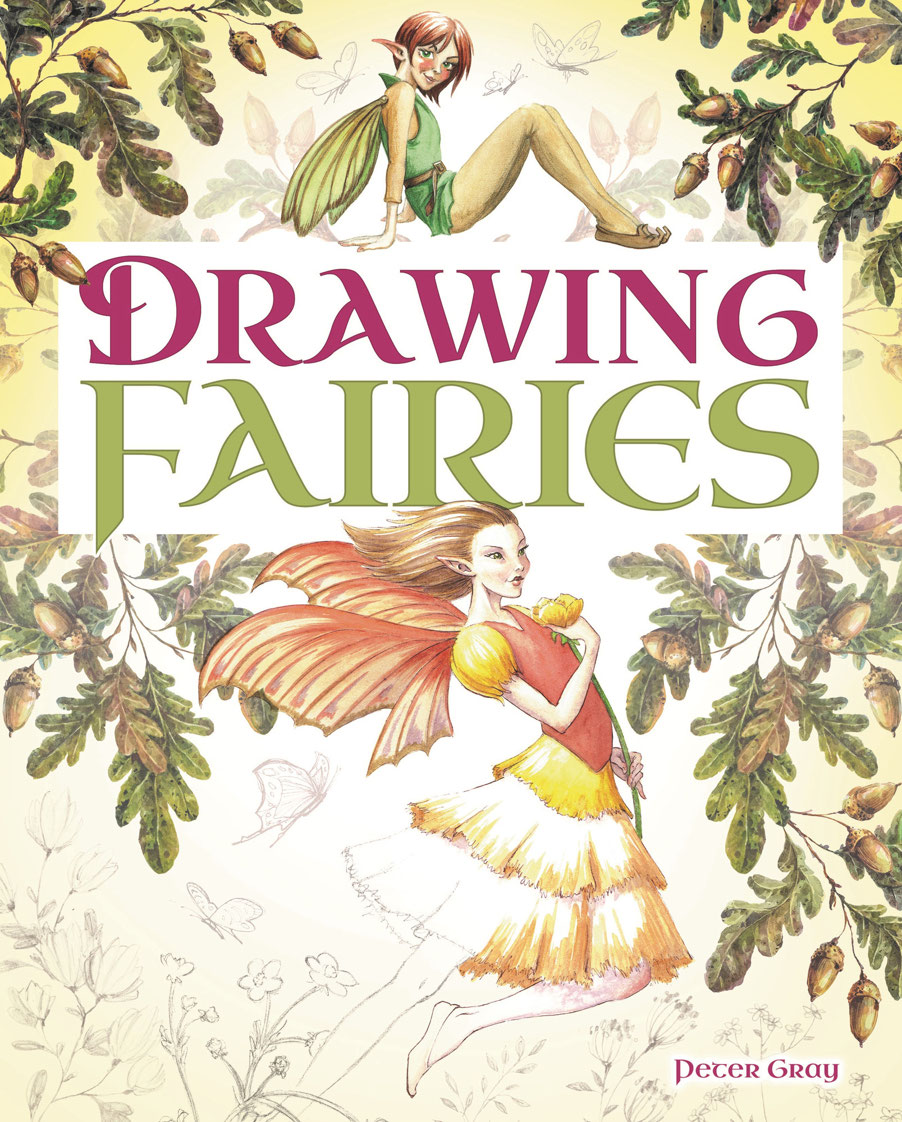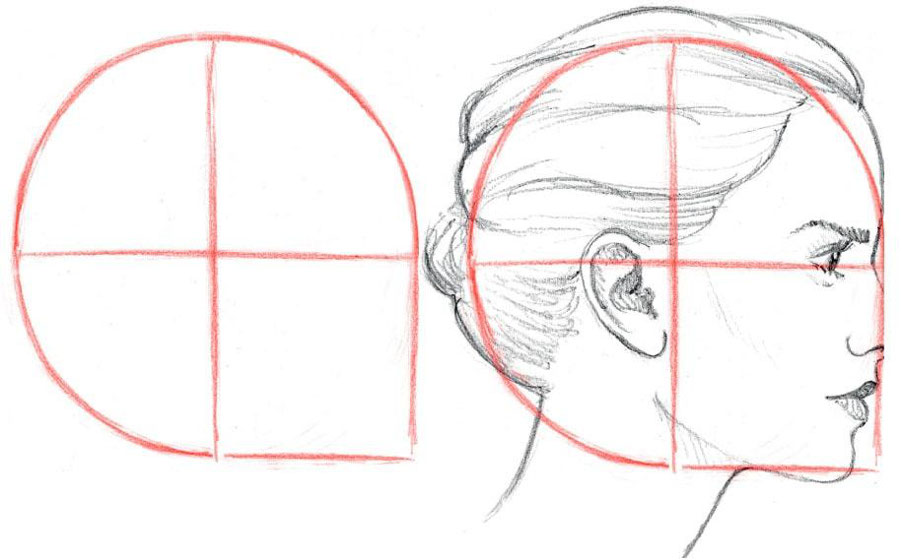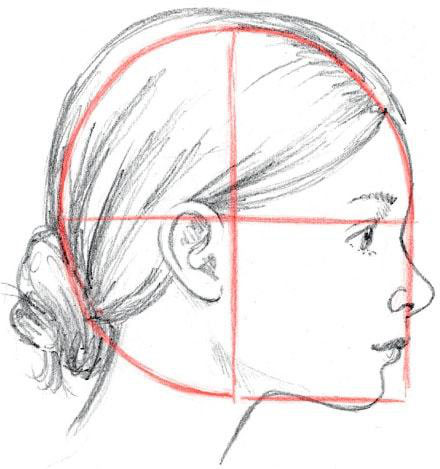CONTENTS
Introduction
Part 1: Fairy Faces
Human Faces
Fairy Faces
Facial Features
Fairy Hair
Hats, Horns and Headdresses
Templates
A Fairy Portrait
A Graphic Portrait
A Pastel Portrait
Part 2: Fairy Figures
Proportions
Pose and Posture
Drawing from a Live Model
Dynamic Figures
Creating a Fairy from a Skeleton
Hands and Feet
Part 3: Fairy Fashions
Folds and Wrinkles
Styles
The Croquis
Wings
A Fairy Fashion Design
Color
Part 4: Fairy Folk
Curvacious Fairy
Elfin Fairy
Child Fairy
Dark Fairy
Goblin
Faun
Part 5: Fairy Flora and Fauna
Integrating Figures
Flowers
Small Creatures
A Fairy Companion
A Fairy of the Forest
A Fairy and a Fish
INTRODUCTION
Fairies, elves, pixies, sprites, goblins, and all their tricksy little friends come to us through centuries of folklore, from all over Europe. We may now think of them as mainly benevolent, playful creatures of fairy tales but different concepts of fairies have existed through the ages. They have been viewed as fallen angels, spirits of the dead, bringers of ill fortune, and otherwise darkly mysterious beings. They have inspired generation after generation of great artists and storytellers, from medieval romances and renaissance plays, right up to the blockbuster fantasy films of the present day.
Through the ages, the ways fairies have been depicted by artists have naturally differed too. For the purposes of this slim volume, however, we will concentrate on the familiar concept of fairy folk as graceful, feminine and essentially human-looking.
Just like every other subject, drawing fairies is mostly about drawing. And for drawing we need nothing more than a willingness to apply ourselves to the task and a very few basic bits of kit:
Pencils. Two or three will suffice, a hard one, say H or 2H for guidelines, and a couple of softer pencils, maybe a B and a 4B for heavier lines and shading. (For the sake of visibility in this book, I have drawn all guidelines and under drawing a lot more heavily than I would recommend. Generally, I suggest drawing them lightly with a hard pencil so that they may be easily and cleanly erased at later stages.)
Sharpener or sharp knife to maintain the points of your pencils.
An artists quality eraser. (Use your knife to sharpen the corners for detailed work.)
Paper. Most of the pictures in this book were done on basic drawing paper of 120gsm weight. For painting or heavy inking, Id recommend thicker paper of 180gsm or heavier. (I did all the artwork in this book on A4 paper, but fairies can be fiddly little characters and theres no reason why you should not work larger if it suits you. Just because we think of fairies as small, we need not draw them at scale.)
Scrap paper for developing characters and compositions, and for testing inks and paints.

Along the way well examine various techniques and the use of a range of materials and coloring methods. Art materials can be expensive. It will serve you better to buy a few good quality colors of whatever medium you prefer, rather than buy vast sets of cheap paints and pencils that will only produce insipid, dispiriting results. And remember that color is the cherry on top of the cake; a pleasant and optional extra to the essential practice of drawing.
As the great fantasy character designer, Iain McCaig, says, Fantasy is just real life with a little twist. All fairy art is based more or less on real people and the real world and thus, in order to draw convincing fairies, we must first be able to draw ordinary people. Well look at how the head and face are constructed along with characteristic fairy features as well as hairstyles, hats, horns and headdresses. We will consider the form and proportions of the body, how to pose the figure and clothe it in appropriate fairy fashions, and well demonstrate how to set the resulting characters among the flora and fauna of the fairy kingdom.
Keep it in your mind that no one knows what fairies really look like. They are imaginary creatures and just as capable of springing from your imagination as from anyone elses. So dont feel you should copy my demonstrations slavishly; use them as starting points for your own designs. Feel free to explore, experiment, exaggerate, and most of all enjoy yourself whenever you embark on drawing fairies.
HUMAN FACES
From the front, the head can be seen as an upside-down egg shape, broad and rounded at the top and narrowing towards the bottom. This is the basic shape that artists begin with when drawing a head. Horizontal and vertical center lines are also helpful for arranging the features of the face.
Seen from the side, the head is rather deeper than from the front. We can think of it as basically a circle with a face stuck on the front. You may find it useful to begin your profile drawings with frameworks like this.
With some features added its possible to see more clearly how the face fits together. You can see the eye at the half way line, set a little way back from the front of the head and, from this profile view, its somewhat triangle shaped.
Again, the eyebrow and base of the nose sit on a level with the ear. Note how far back the ear sits on the head behind the vertical halfway line.
Another surprising thing to notice is that the face occupies such a small area of the overall head, when seen from the side.
The same head shape can be used for people of different ages, but you need to be aware of the differing proportions of younger faces. Here we see a young girl of about seven and a baby of a few months. Their heads are essentially the same shape, but the faces sit lower on the head, the younger they are. Thus, the girls eyeline is somewhat lower than the fully-grown womans, sitting clearly below the center line, and the babys is lower still.
Noses and mouths are much smaller in younger subjects, but ears and eyes are quite a lot larger, in relation to the overall head size.
FAIRY FACES
Many fantasy artists depict fairies with ordinary human faces, although unusually pretty ones. Others draw fairies with distinctive elfin faces. With a general understanding of how to draw human heads and faces, you only need a few adaptations to develop them into fairy-like characterizations. Fairy face types are many and varied, but there are some commonly observed elements.

















